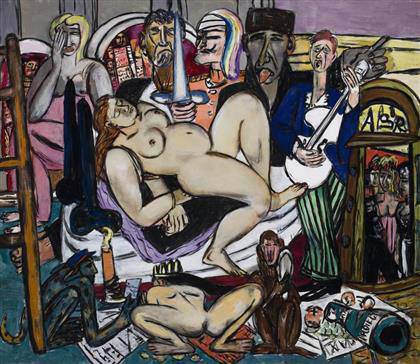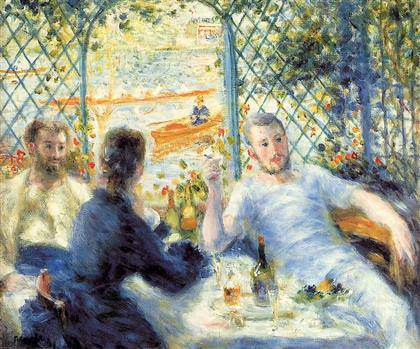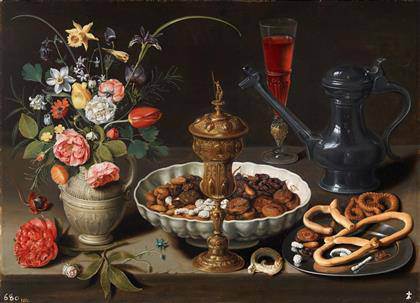
Max Beckmann
“The Town (City Night)”, 1950.
Saint Louis Art Museum
‘Max Beckmann in New York’ at the Metropolitan The exhibition ‘Max Beckmann in New York’ at The Metropolitan Museum of Art will put a spotlight on the artist’s special connection with New York City. October 19, 2016–February 20, 2017.]]>
Source: Metropolitan Museum
The exhibition features 14 paintings that Beckmann painted while living in New York from 1949 to 1950, as well as 25 earlier works, dating from 1920 to 1948, from New York collections. The exhibition assembles several groups of iconic works, including self-portraits; mythical, expressionist interiors; robust, colorful portraits of women and performers; landscapes; and triptychs.
In late December 1950, Beckmann set out from his apartment on the Upper West Side of New York to see his “Self-Portrait in Blue Jacket” (1950), which was on view at The Met in the exhibition “American Painting Today”. However, on the corner of 69th Street and Central Park West, the 66-year-old artist suffered a fatal heart attack and never made it to the Museum. The poignant circumstance of the artist’s death served as the inspiration for the exhibition.
During the late 1920s, Max Beckmann (1884–1950) was at the pinnacle of his career in Germany—his work was presented by prestigious art dealers; he taught at the Städel Art School in Frankfurt and moved in the city’s highest social and cultural circles, counting publishers, writers, critics, and collectors among his friends; and the Kronprinzenpalais (Nationalgalerie) in Berlin had inaugurated a gallery devoted to his paintings. After the Nazis labeled his works “degenerate” and confiscated it from German museums, Beckmann left the country and immigrated to Holland, where he remained for 10 years. After the war, and after rejecting offers to teach in Berlin and Munich, Beckmann accepted a temporary teaching position in St. Louis, Missouri, in 1947. He made his move to America permanent in 1948, seeing his emigration as marking the end of his exile. In September 1949 he moved to New York City, which he described as “a prewar Berlin multiplied a hundredfold,” and began teaching at the Brooklyn Museum Art School. He and his wife Mathilde “Quappi” Beckmann first lived at 234 East 19th Street, between Second and Third Avenues, moving in May 1950 to 38 West 69th Street, between Central Park West and Columbus Avenue. Life in Manhattan energized him and resulted in such powerful pictures as “Falling Man” (1950) and “The Town (City Night)” (1950).
Related content
Max Beckmann’s landscapes at Kunstmuseum Basel (exhibition, 2011)
Follow us on:


